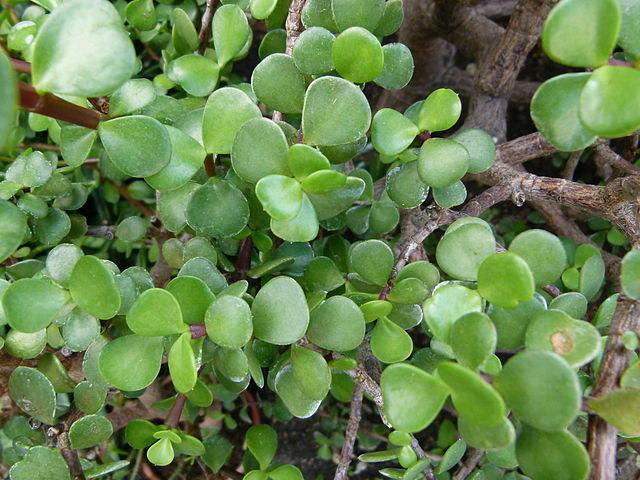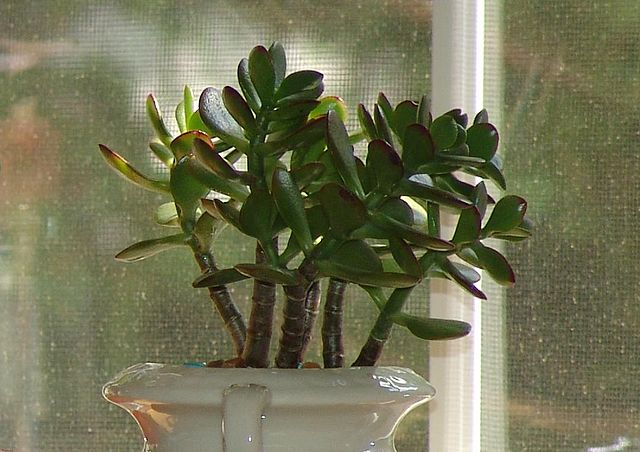Portulacaria afra is a small-leaved succulent plant found in South Africa. These succulents commonly have a reddish stem and leaves that are green, but also a variegated cultivar is often seen in cultivation. They are simple to care for and make easy houseplants for a sunny location. In frost-free regions they may be used in outdoor landscaping.
Image: Portulacaria afra 02
Image: Portulacaria afra flowers 1
"Prostrata" decumbent variety
P. afra cultivated as a bonsai
Crassulacean acid metabolism
Crassulacean acid metabolism, also known as CAM photosynthesis, is a carbon fixation pathway that evolved in some plants as an adaptation to arid conditions that allows a plant to photosynthesize during the day, but only exchange gases at night. In a plant using full CAM, the stomata in the leaves remain shut during the day to reduce evapotranspiration, but they open at night to collect carbon dioxide and allow it to diffuse into the mesophyll cells. The CO2 is stored as four-carbon malic acid in vacuoles at night, and then in the daytime, the malate is transported to chloroplasts where it is converted back to CO2, which is then used during photosynthesis. The pre-collected CO2 is concentrated around the enzyme RuBisCO, increasing photosynthetic efficiency. This mechanism of acid metabolism was first discovered in plants of the family Crassulaceae.
The pineapple is an example of a CAM plant.
Overnight graph of CO2 absorbed by a CAM plant
CAM is named after the family Crassulaceae, to which the jade plant belongs.
Cross section of a CAM (Crassulacean acid metabolism) plant, specifically of an agave leaf. Vascular bundles shown. Drawing based on microscopic images courtesy of Cambridge University Plant Sciences Department.








